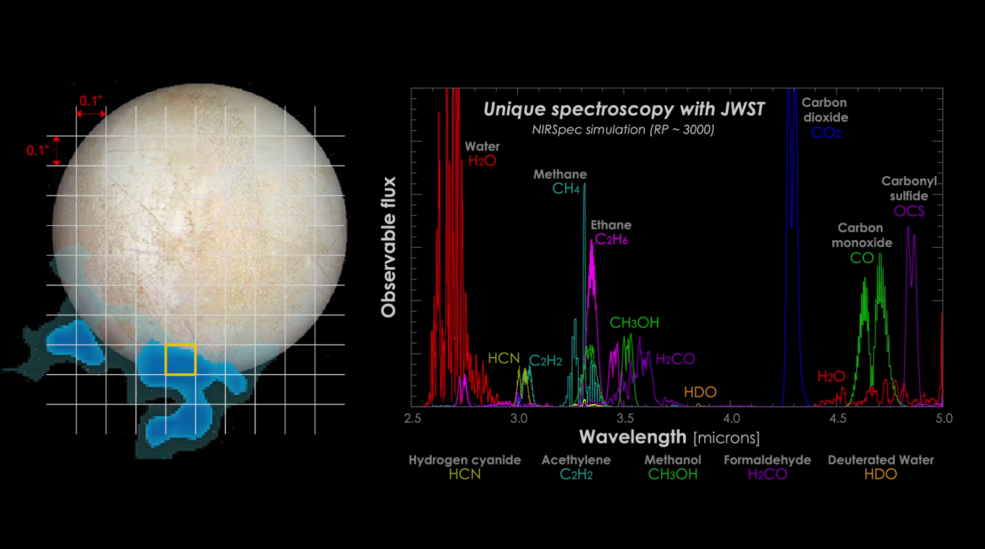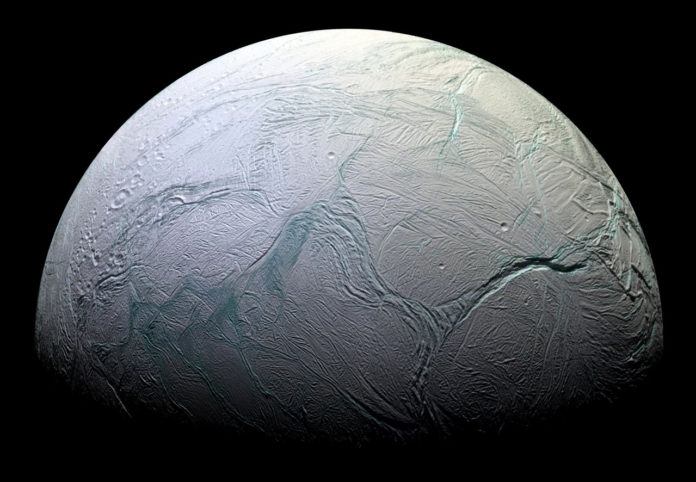NASA is soon to employ the use of the James Webb Space Telescope to study the “ocean worlds” of Jupiter’s moon, Europa, as well as Saturn’s moon Enceladus using its infrared capabilities. The observations could help guide future missions to these moons, which have been objects of study for quite some time now.
Lead scientist on the Webb telescope’s observation of Europa and Enceladus is Geronimo Villanueva, a planetary scientist at NASA’s Goddard Space Flight Center in Greenbelt, Maryland. All in all, the team is a part of a bigger study led by astronomer Heidi Hammel, the executive vice president of the Association of Universities for Research in Astronomy (AURA).
In particular, the scientists are hoping to delve deeper into the plumes of water that lie on the surface of Europa and Enceladus. Previous gathered evidence has shown that these jets are actually the result of geologic processes heating these sub surface oceans. “We chose these two moons because of their potential to exhibit chemical signatures of astrobiological interest,” said Hammel.
The team is planning to study the surface of Europa using Webb’s near-infrared camera (NIRCam) to search for hot regions indicating plume activity and other active geologic processes. Once located, the plume’s composition will be further analyzed using Webb’s near-infrared spectrograph (NIRSpec) and mid-infrared instrument (MIRI). Hopefully, these observations will reveal more about the mysterious composition of the plumes.
In regards to Enceladus, because it is so much smaller than Europa, they’re unable to achieve the same high-resolution imagery. However, they can still analyze the moon’s plumes’ molecular composition via the telescope. While Villanueva and team are planning to use NIRSpec to capture organic signatures from the plumes of both moons, there are no guarantees they’ll have any success. “We only expect detections if the plumes are particularly active and if they are organic-rich,” says Villanueva.
If *chemical disequilibrium is discovered in the plumes this could be a sign of natural processes of microbial life or caused by some form of natural geologic process. Whilst this study won’t conclude for sure whether or not there is life on the subsurface of the moons, it will be able to better characterize these areas, which could then warrant further research.

*Disequilibrium means the opposite of equilibrium. – *chemical equilibrium is the state in which both reactants and products are present in concentrations which have no further tendency to change with time. Usually, this state results when the forward reaction proceeds at the same rate as the reverse reaction. Via Wikipedia
More News to Read
- Researchers Learn How Cytoplasm Feels to a Cell
- World’s First Nanoweave Created From Purely Organic Materials
- MIT Gives Students Well-Rounded Software Development Experience
- Why Should Every Developer Learn Javascript?
- A Camera Built With High-Quality Video and Craftsmanship in Mind: The Waylens Horizon

